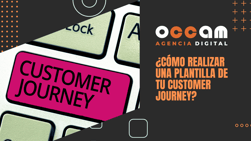Index Content
At times, it seems that consumers are saturated with so much information and run away from brands. Their behaviour has changed, their habits are no longer the same as before, getting their attention is not as easy as it was 10 years ago, nor do intrusive advertising techniques have the same impact. But there is a way to transform this situation and achieve success. It is called Inbound Marketing and it has become a global trend based on attraction, focused on the customer and aimed at increasing the number of leads or prospects in order to convert them into loyal customers to the brand.
It aims to generate sales through the production of valuable content, adapted to the profile of the potential customer and the building of solid relationships.
Its philosophy consists of attracting the user to your brand in a natural way instead of seeking them out with intrusive techniques. How can you use Inbound Marketing to increase your sales? First, you need to know the pillars that support it.
let's get started!
Get to know the 4 pillars of the Inbound methodology to increase your sales
1- Web positioning. Do you want to gain more visibility?
Optimising your website for search engines is not just about search engines. It is also about making your website a better place for the public. SEO, or search engine optimisation, consists of a set of actions aimed at improving the visibility of a website and reaching the top positions on Google and other search engines.
Few brands are spared from having web visibility, given the global world we live in. And on the internet, success goes hand in hand with search engine positioning: more organic traffic, more visits, which translated into business language means: more leads, more ROI and more potential customers. SEO talks about organic positioning without beating around the bush. An optimisation party that happens inside and outside your website with: keywords, content, HTML code, internal and external links, tags and meta-tags, structure, blog and social networks.
Your SEO will take into account:
- Relevance (content) - if Google has to return results for a particular topic such as sportswear, how do you think it chooses who will come up first in searches? This is where the relevance of your content comes into play - fresh, quality, original and up-to-date. It also takes into account the keywords used in the title, domain, links and the rest of the content on your page.
- Popularity (referencing): This has to do with the acceptance your website has among the public. If many users recommend it, so do search engines. It is made up of: brand recognition, popularity on social media, the authority of the site, internal and external links.
2-Content marketing: To make your customers fall in love with you.
This technique consists of creating and disseminating relevant content to attract the target audience (the one you have already defined in your buyer persona). Not only does it provide quality content, it is also a very powerful tool to generate traffic and sales. But the content does not have to be only written text, it can be infographics, videos, tutorials, webinars, presentations, games and a host of other things.
You will start by defining your buyer persona: their concerns, their habits, their professional profile, their responsibilities and objectives, their challenges... No vagueness or ambiguities. Remember that before working on your content strategy you must gain the trust of your team, clearly transmit the expected objectives, define the required budget and measure the results. Have you already done it?
(comment: maybe here we can link to the downloadable material to define the Buyer Persona, a catchy CTA)
Then, it's time to put your content marketing strategy into action. Harness the full power of your blog, increase the potential of your quality content, add visual value and spread the word.
3-Social Media: Viralise your messages.
"The future of business is social" - Barry Libert.
Social networks are more important than ever. They are not platforms, they are experiences. And the content disseminated on them must focus on the needs of the reader, listener or viewer. Tell your audience "I see you, I hear you and I care about you". It would make no sense to create content that no one will read, so social media marketing has become another vital element of the Inbound Marketing matrix.
These are actions carried out by a brand or a professional in order to promote their products or services and build a relationship with their potential customers through the blog and social networks. To implement it you must:
- Analyse the situation. Study in detail the current state of your company, your audience and the competition. Do your direct competitors have a presence on social networks? What is being talked about in this space about your brand? Do you have an active presence on them? What are the social networks most used by your potential audience?
- Plan your strategy. What will be the specific objective of your social media presence? Try to set specific, measurable, realistic, short and long term goals. Keep in mind who your target audience is and what characterises them. Choose the social networks that best suit your offer and your target market. And choose a responsible team with experience as Community Managers, as they will be the ones to execute the strategy.
- Implement it: If you already have your objectives clear, it's time to get down to work. You have to fulfil every detail specified in a content calendar where the topic, format, date, timetables, tools and platforms used are reflected. The clearer you are, the easier it will be to control the strategy.
- Measure results: What effect have your social media actions had? Have you defined your KPIs (Key Performance Indicators)? Some KPIs for your social networks are: the increase in followers, the volume of publications, the number of clicks on links and the number of shared links.
4-Email Marketing: Reach more people in less time.
An email has a capacity that other channels do not have, such as creating value or personalisation on a large scale. There are no magic formulas. Email marketing is a very powerful and effective communication tool. An ideal way to achieve your business objectives and with which the chances of your audience buying, subscribing or downloading your content soar. The key is to know how to test well.
Ideal for increasing your sales, building customer loyalty and strengthening your chemistry, all thanks to the sending of information of interest, gifts, offers, discounts and much more. Its main advantages are: Personalisation:
- Personalisation: You can easily segment your audience based on different factors and personalise your messages. They will reach them at the right time and with the right message.
- Effectiveness: You will reach thousands of people quickly and directly, wherever they are, so you will increase money and time.
Nothing is viral, until it is. Ready to embark on the Inbound Marketing universe and increase your sales?




